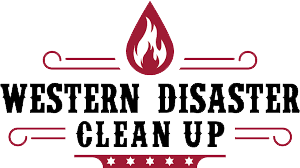If you live in an area prone to intense storms, you should be aware of what damage those storms may cause.
The most severe storms occur in the midwest and eastern coastal regions of the United States. This doesn’t mean disasters cannot occur in western and dryer areas.
Storms can be much more dangerous when the weather is dryer because they are not as frequent.
A storm may damage your home in a variety of ways. Here are the most significant factors that can damage your home.
Exterior damage
When a major storm moves through your area, as a homeowner, you are most likely focused on the external damage that can happen to your home.
External damage is evident and can also be prevented in some cases. Most exterior damage is caused by high winds and debris, while other causes are hail, lightning, and rain.
Here is how your home’s exterior is at risk of damage.
Roof damage
Your roof is the primary portion of your home that keeps you dry. Storm damage can change that in an instant, causing a host of other problems.
Most shingles are composed of asphalt and paper components. They are nailed in place and sealed with a tar strip when installed on your roof. When your shingles are sealed and secured like this, they form an effective barrier against wind and weather.
As shingles age, they become brittle and more susceptible to wind damage. A strong windstorm can blow brittle shingles off your roof, allowing spots for water to enter your home.
Ensuring your roof is in good condition before the storm season starts may just save you from some unexpected water damage indoors.
Siding and windows
Your roof may take the brunt of the storm’s fury, but your siding and windows could be just as much of a headache if damaged.
House siding can take on many forms:
- Brick
- Metal panels
- Stucco
- Wood
- Vynal
- Fiber Cement
- Insulated siding
Sometimes your siding can be more at risk of damage and its angle to the storm. Your slanted roof may be able to deflect most debris knocked loose in a storm.
The straight, vertical walls of your home cannot deflect debris as easily as a roof might be able to. Rather than changing the angle of an object, they are more likely to take the blunt force of the blow.
Concerns about the integrity of your siding may not be as warranted as most storms, especially in the western states, won’t create winds powerful enough to throw heavy pieces of debris into your home.
Foundation
It may surprise many homeowners to discover that storms can damage your home’s foundation.
In high winds, your home is subjected to the intense pressure that causes the walls to bend and wobble slightly.
The slight back-and-forth motion can work at your home’s foundation where the frame connects with the foundation. Enough wind can cause fissures to erupt in your foundation, further damaging the structure of your home.
Your windows are the most at risk of flying debris. Flying debris can cause them to scratch, crack, or shatter. Some areas with frequent intense storms may have storm shutters or attachable covers that can be secured as an extra precaution against storms.
Interior Damage
Most storm damage will occur on the outside of your home. There are a few unexpected ways storms may cause damage inside your home, though.
Flooding
One of the hardest dangers to prepare for is flood damage. Flooding can occur suddenly and is challenging to keep out. Additionally, it only takes a few inches of water to cause damage with a massive financial toll.
Local government resources should be able to inform you if the home you are living in is prone to natural flooding.
Water damage
Water damage caused by leaks can cause damage to your sheetrock, carpets, furniture, and more. This is where having good shingles pays off. Water can seep through the cracks caused by storm damage into your home.
Water can warp the wood on your roof and walls, causing instability and accelerating rot and deterioration. Similarly, wet sheetrock becomes less stable and may begin to crumble with persistent exposure.
Apart from physical damage, water damage can cause health hazards.
If you don’t dry water fast enough, dangerous fungi like mold can begin to grow and spread. Mold spores are nasty for your health. To prevent them, be sure to treat any form of water damage properly as soon as possible.
Fire damage
A storm system of heavy rain and wind may not be thought of as a fire hazard, but plenty of fires are started by intense storms every year.
Storms can generate lighting, a force of nature that is as powerful as it is sudden. Lighting is responsible for causing tens of thousands of fires a year and can cost hundreds of millions of dollars a year in damage.
Other Damage
Utility damage
High winds have a nasty habit of damaging power grids and communication lines.
Storms can cause problems with electricity, water, gas, and the internet. On top of all this, downed trees and other debris hazards can make getting other crucial supplies difficult.
While there is little you can do as an individual to prevent this, you can be prepared with food and water storage, portable power sources, flashlights, and extra blankets for the cold seasons.
Western Disaster’s Cleanup to Rescue You From Storm Damage
Recovering from extensive storm damage can be a long and arduous process. Doing it on your own is even more difficult.
This is why we offer full-scope recovery and restoration services! We cover almost every disaster imaginable. From natural disasters to dangerous chemical spills, we are certified professionals that get the job done.
Call us now if you need help recovering from a disaster. We are available to help you 24/7 in your time of need.

